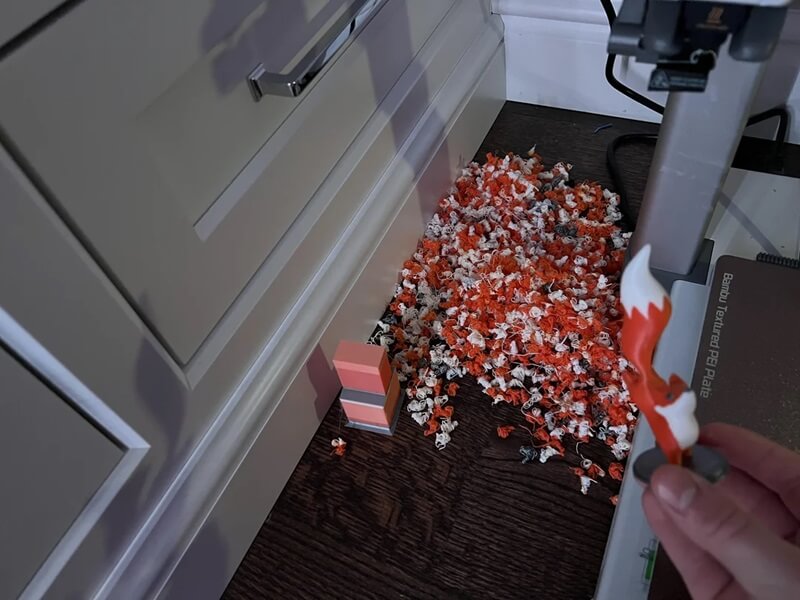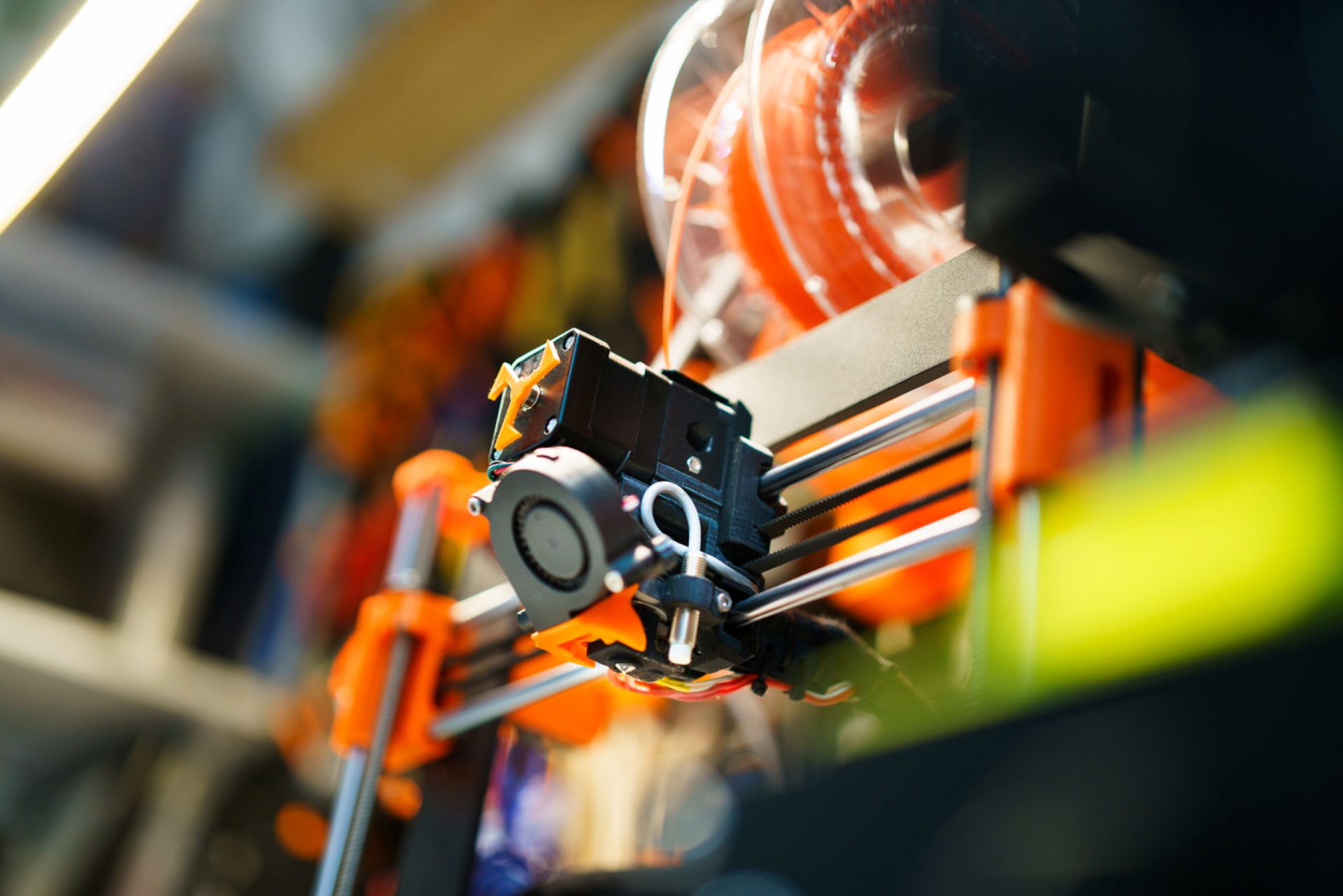A striking photo posted on Reddit is sparking an important conversation about the environmental impact of 3D printing at home.
The image, shared in the r/mildlyinfuriating community, shows a small 3D-printed fox figurine next to a massive pile of plastic filament waste.

"The amount of waste filament from multi color printing! It wastes 15x the amount of filament that ends up in the print!" the Redditor wrote in the post title. They added that the print job took a whopping 44 hours to complete.
The white and orange fox, which looks to be just a couple of inches tall, is dwarfed by the tangled heap of plastic waste sitting next to it. The visual is a powerful illustration of how much material gets discarded in the 3D-printing process compared to the size of the final product in some projects.
When other Redditors asked what becomes of all that leftover filament, the original poster shared a disheartening reality: "Nothing they are garbage. That [is] the [annoying] part because there's so much byproduct as waste. Even if I could melt and re-extrude them they would be a mix of color due to how filament purging works."
The technology behind 3D printers can be used for major environmental benefits, even including the ability to print entire buildings with far less emissions and overall costs than traditional techniques, and it could be the future of home-building. But home 3D-printer use often ends up using and wasting a lot of unnecessary plastic.
As 3D printers become more affordable and accessible to everyday consumers, it's crucial that we grapple with their environmental footprint. Plastics take hundreds of years to decompose, so most of this 3D-printing waste will end up sitting in landfills, littering landscapes, and polluting waterways for generations to come.
Reactions in the comments echoed concerns over the sustainability of home 3D printing in its current state:
"44 hours for that little piece of crap are you kidding me?" a user asked. "Why do people spend money on this stuff?"
Another lamented, "Another proof that 3d printers are used almost exclusively as garbage generator in house use."
"3D printing is MASSIVELY contributing to plastic waste," stated a third. "And honestly we need some regulations here on environmental sustainability and recycling opportunities."
The good news is that as awareness of this issue grows, so will the motivation to develop solutions. Together, we can push for more efficient 3D-printing techniques, better filament recycling programs, and alternative materials that are kinder to our planet.
Every voice in this conversation matters.
Join our free newsletter for cool news and actionable info that makes it easy to help yourself while helping the planet.









